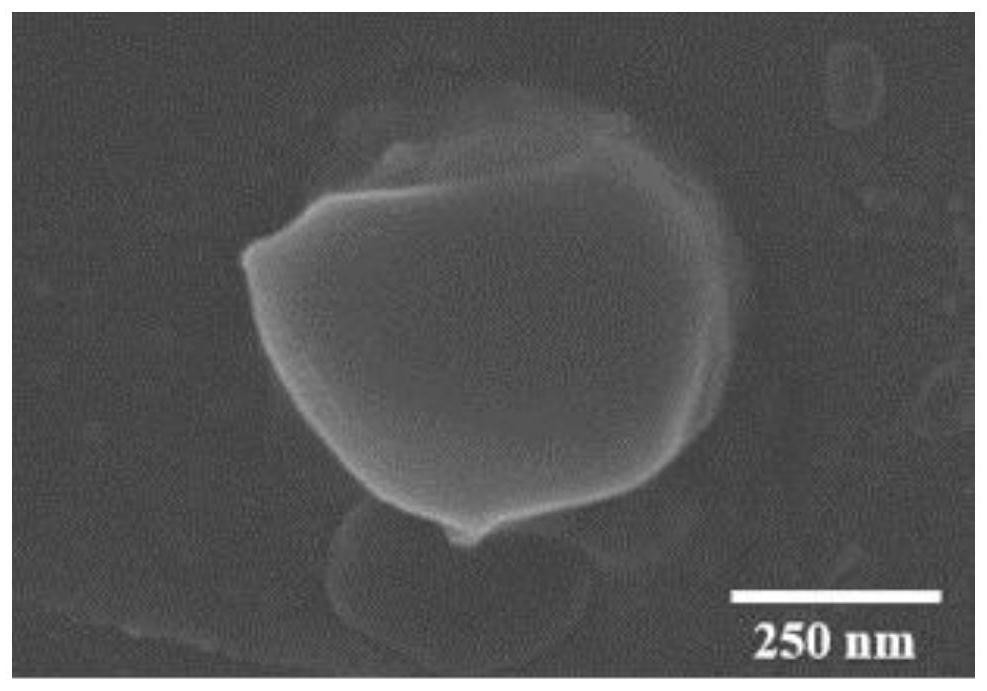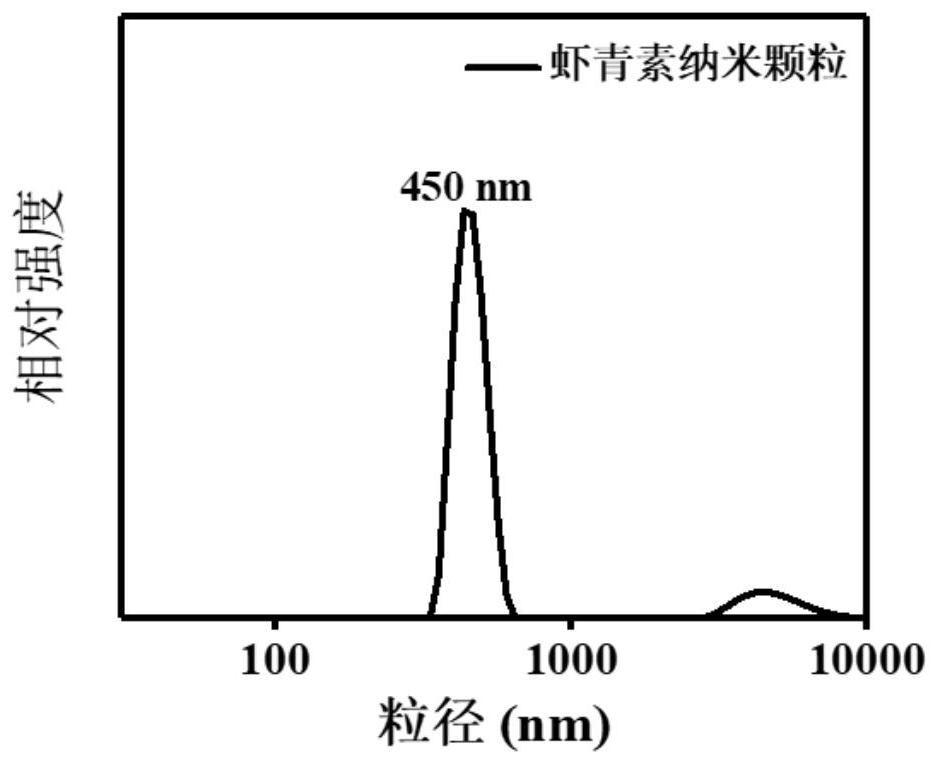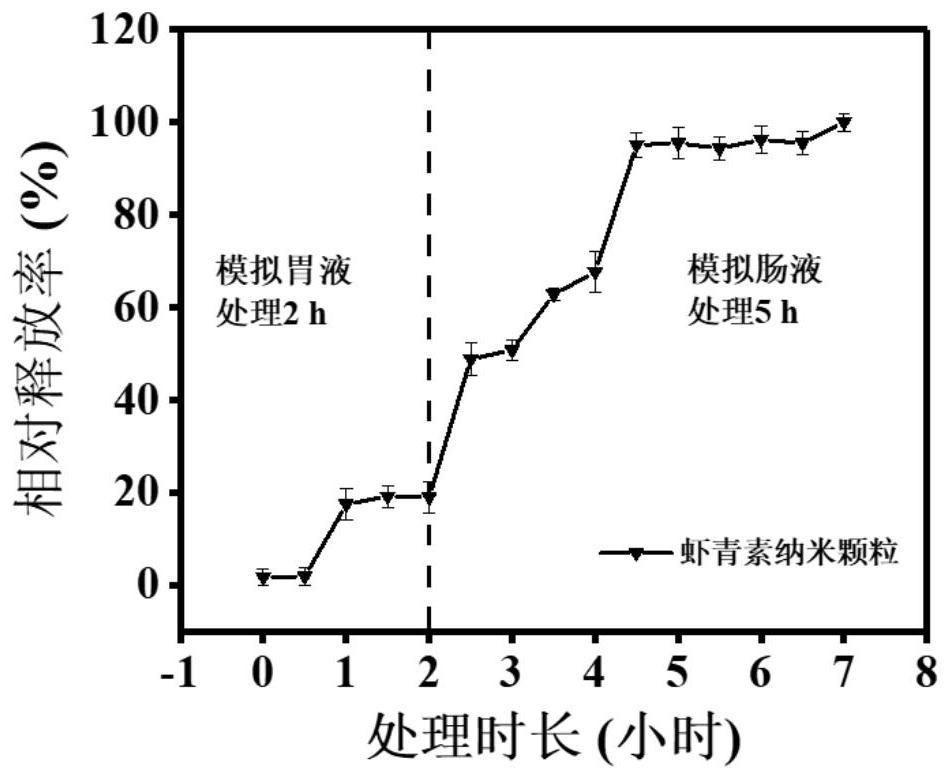Stimuli-responsive astaxanthin nanoparticles, preparation method thereof and application of stimuli-responsive astaxanthin nanoparticles to directions of mitochondrial targeting and colitis relieving
A nanoparticle and stimuli-responsive technology, which is applied in applications, anti-inflammatory agents, microcapsules, etc., can solve the problems of lack of stimuli-responsive loading capacity and difficulty in targeted and concentrated release of nutritional functional factors, so as to improve absorption Utilization, enhanced targeting, effect of alleviating colonic inflammation
- Summary
- Abstract
- Description
- Claims
- Application Information
AI Technical Summary
Problems solved by technology
Method used
Image
Examples
preparation example Construction
[0034] A method for preparing astaxanthin nanoparticles with pH response, mitochondrial targeting and inhibition, and relief of colonic inflammation, comprising the following steps:
[0035] S1. Preparation of TPP carboxyl activation solution: Weigh (3-carboxypropyl) triphenylphosphine bromide (TPP) and dissolve it in 2-(N-morpholine) ethanesulfonic acid (MES) buffer solution, so that the final TPP The concentration is 4~8mg / mL, magnetically stirred at 600~800rpm, fully dissolved; then add 1-(3-dimethylaminopropyl)-3-ethylcarbodiimide hydrochloride and N-hydroxy Succinimide, magnetic stirring 600-800rpm, reaction time 3h-5h;
[0036] S2. Preparation of chitosan-TPP complex: take chitosan and fully dissolve it in glacial acetic acid solution, so that the final concentration of chitosan is 4-8 mg / mL; gradually add chitosan solution to the In the TPP carboxyl activation solution, the magnetic stirring is 600-800rpm, and the reaction time is 6-10h; after the reaction, the chitosa...
Embodiment 1
[0042] An astaxanthin nanoparticle with pH response, mitochondrial targeting, and colonic inflammation relief, comprising the following components: casein content 66.22% w / w, chitosan-TPP complex content 8.27% w / w , the content of sodium alginate is 24.83% w / w, and the content of astaxanthin is 0.66% w / w.
[0043] The preparation method of the astaxanthin nanoparticles with pH response, mitochondrial targeting and relief of colonic inflammation comprises the following steps:
[0044] S1. Preparation of TPP carboxyl activation solution: Weigh (3-carboxypropyl)triphenylphosphine bromide (TPP) and dissolve it in 0.1M pH 5.0 2-(N-morpholine)ethanesulfonic acid (MES) buffer solution , so that the final concentration of TPP is 8mg / mL, fully stirred and dissolved under the condition of 600rpm; then add 1-(3-dimethylaminopropyl)-3-ethylcarbodiimide hydrochloride to the final concentration of TPP solution The final concentration of N-hydroxysuccinimide is 8mg / mL and 4mg / mL, and the re...
PUM
| Property | Measurement | Unit |
|---|---|---|
| Concentration | aaaaa | aaaaa |
| Particle size | aaaaa | aaaaa |
| Size | aaaaa | aaaaa |
Abstract
Description
Claims
Application Information
 Login to View More
Login to View More - R&D
- Intellectual Property
- Life Sciences
- Materials
- Tech Scout
- Unparalleled Data Quality
- Higher Quality Content
- 60% Fewer Hallucinations
Browse by: Latest US Patents, China's latest patents, Technical Efficacy Thesaurus, Application Domain, Technology Topic, Popular Technical Reports.
© 2025 PatSnap. All rights reserved.Legal|Privacy policy|Modern Slavery Act Transparency Statement|Sitemap|About US| Contact US: help@patsnap.com



